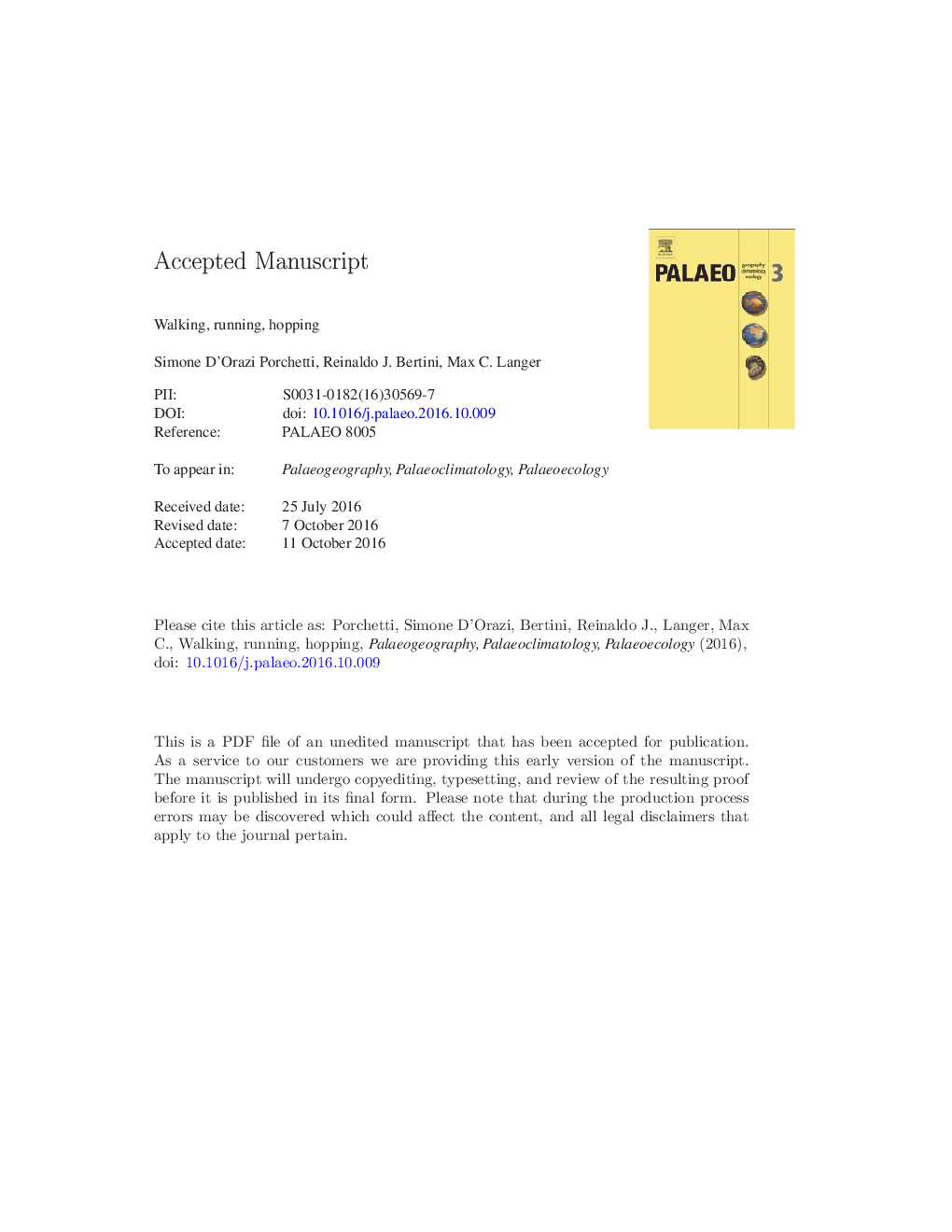| کد مقاله | کد نشریه | سال انتشار | مقاله انگلیسی | نسخه تمام متن |
|---|---|---|---|---|
| 5755993 | 1412697 | 2017 | 51 صفحه PDF | دانلود رایگان |
عنوان انگلیسی مقاله ISI
Walking, running, hopping
دانلود مقاله + سفارش ترجمه
دانلود مقاله ISI انگلیسی
رایگان برای ایرانیان
موضوعات مرتبط
مهندسی و علوم پایه
علوم زمین و سیارات
فرآیندهای سطح زمین
پیش نمایش صفحه اول مقاله

چکیده انگلیسی
Synapsids were able to adopt different gaits, including half-bounding and bipedal skipping, since the Early Jurassic, as indicated by a large record of fossil footprints, found in hyper-arid erg-dominated paleonvironments from South and North America. The mammaliamorph origin of these footprints is corroborated by their shape, stance, and gait, in a large number of trackway specimens from the Paraná Basin (Botucatu Formation) of Brazil. This record is interpreted as the expression of the locomotor skills of a single trackmaker population, and might be grouped together under a pre-existing ichnotaxonomic label, Brasilichnium elusivum Leonardi, 1981, including one of the few unambiguous Mesozoic records of bipedal saltatory gait in synapsids. This bipedal saltatory gait is associated with desert paleoenvironments, and more specifically with sand dunes with little or no vegetation cover. Decades of collecting has resulted in one of the largest records of synapsid footprints worldwide, and ichnology has proven fundamental to investigate elusive aspects of their natural history.
ناشر
Database: Elsevier - ScienceDirect (ساینس دایرکت)
Journal: Palaeogeography, Palaeoclimatology, Palaeoecology - Volume 465, Part A, 1 January 2017, Pages 14-29
Journal: Palaeogeography, Palaeoclimatology, Palaeoecology - Volume 465, Part A, 1 January 2017, Pages 14-29
نویسندگان
Simone D'Orazi Porchetti, Reinaldo J. Bertini, Max C. Langer,